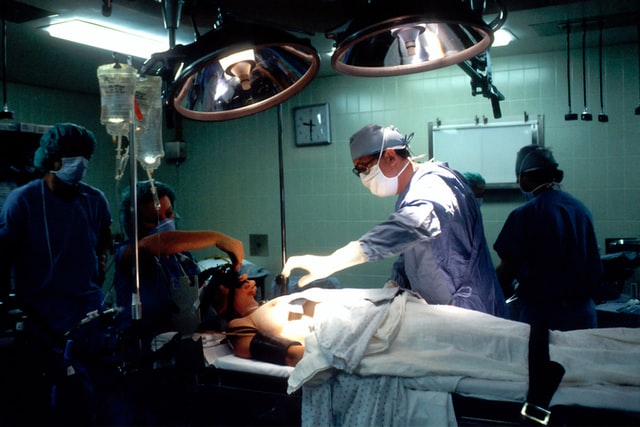Anemia is a lack of hemoglobin (pigment of red blood cells carrying oxygen from lungs to tissues) in the blood.
In human, the normal level of hemoglobin varies with age and sex. Therefore, for a man to be declared anemic, his hemoglobin must be less than 13 grams / deciliter (13.0 g/dl); for a woman, however, it must be lower than 12 grams / deciliter (12.0 g/dl). Anemia is the most common cause of consultation in hematology in USA. It affects more than 3.4 million Americans.
Anemia Causes
Anemia is a medical condition that can be caused by more than 200 different factors. However, scientists classify it in three broad categories according to its physiological mechanism:
Excessive blood loss: it is the most common type of anemia. Anemia by excessive loss of blood is mainly caused by hemorrhage – hemorrhagic anemia. This type of anemia is due to either external or internal bleeding.
1) External bleeding – this condition happens when the blood is coming out from an open wound (injury). It is less life threatening than internal bleeding; however, it requires rapid medical attention in case of excessive bleeding. External bleeding can be: arterial, the most serious form causing large amount of blood loss; capillary, the most common but less serious; and venous, usually characterized by a slow bleeding.
2) Internal bleeding – Internal bleeding is a life threatening condition requiring immediate medical care. It is caused by trauma or weakness of the vessel wall. It is often characterized by pale or clammy skin, tachycardia (increased heart rate), abdominal pain, abdominal swelling, chest pain, fatigue and sometimes fever.
Abnormal destruction of red blood cells (RBCs): Hemolytic anemia is due to hemolysis, the destruction of red blood cells inside the blood vessels or elsewhere before their normal life span of 120 days. Hemolysis may be either intravascular or extravascular:
1) Intravascular hemolytic Anemia, mostly constitutional, is caused by the destruction of red blood cells due to the release of abnormal hemoglobin in the plasma.
2) Extravascular hemolytic anemia is mostly due to internal aggression: parasitic infection (malaria), auto-immunization with antibodies directed against antigens on the red blood cells (hemolysis autoimmune), immunological reaction to a drug leading to the destruction of red blood cells (hemolysis immunoallergique), absorption of toxic substances, mechanical breakdown of red blood cells by obstacles such as a prosthetic heart valve.
Lack of red blood cells (RBCs) production: this type of anemia is often linked to an abnormality in the production of red blood cells in bone marrow. Unlike to excessive blood loss (anemia), this type of anemia develops gradually. It may be due to:
a) Any malignant proliferation in the blood or bone marrow (leukemia for instance);
b) lack of production of erythropoietin (hormone that regulates the formation of red blood cells) due to certain medical conditions such as kidney failure;
c) lack of synthesis of hemoglobin, resulting in microcytosis, decrease in the volume of red blood cells);
d) Lack of DNA synthesis, resulting in a macrocytosis (increased volume of red blood cells) caused by a deficiency of vitamin B12 (Biermer disease), lack of folic acid, digestive disorders, absorption of toxic substances, or high alcohol intake;
e) Macrocytosis, due to toxicity of certain cancer drugs (chemotherapy, radiation) or disease of the bone marrow.
Anemia Symptoms
Most visible symptoms of anemia are paleness of the skin and pale or red lining of the mouth. Anemic people may complain about symptom of fatigue and dizziness, which occur when they make efforts, or at rest when the anemia is more severe. It can occur in the elderly and pregnant women signs of heart failure (rapid or irregular beating) accompanied by swelling of the ankles and face.
Symptoms of anemia differ from a type of anemia to another. Hemorrhagic anemia (Excessive blood loss) is characterized by deficiency of hemoglobin, excessive thirst, dizziness, weakness, sweating, rapid respiration. When anemia is very chronic signs of orthostatic hypotension (fall in blood pressure) can occur. Hemolytic anemia is often accompanied by an increased volume of the spleen (due to the destruction of red blood cells in the body) and jaundice (due to the increase in bilirubin). Anemia due to deficiencies of iron (iron deficiency anemia), vitamin B12 (vitamin B12 deficiency anemia) and/or folic acid (folate deficiency anemia) is very often characterized by atrophy of the lining lingual.
Anemia Diagnosis
Sometimes, anemia is diagnosed by simple analysis of the blood numeration, without any obvious clinical signs. However, to be accurate, the diagnosis must be based on cytological examination of blood, also called complete blood count (CBC). It is also diagnosed by a blood test that measures the average globular volume and the level of reticulocytes (immature red blood cells), which allows to distinguish Lack of red blood cells production from excessive blood loss.
Anemia Treatment
The treatment of anemia depends on its cause. Thus, folate deficiency anemia is treated by increasing folic acid intake (by taking folic acid supplements, or eating foods rich in folic acid); vitamin B12 deficiency anemia is treated by intramuscular injection of vitamin B12, and iron deficiency anemia is treated with taking iron orally or by injection. Transfusions (blood transfusion) are used in severe anemia, or types of anemia of which cause has no cure



